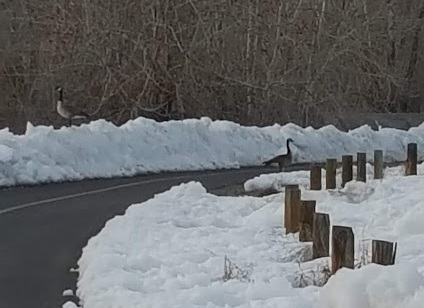
By Hannes Thum
There are milestones in the year that both ground the calendar and befuddle me. Fixed markers of time should be, on one hand, opportunities to recalibrate one’s sense of the pace of the year. On the other hand, I find them increasingly jarring in the sense that, despite what it says on the calendar, the natural rhythms of the year don’t always seem to align with fixed dates neatly.
It is easy to see “spring!” on the faces of those around me. Even those who love winter can’t resist smiling at the opportunity to bask in the sun in a T-shirt on their porches. Sunscreen is becoming more of a necessity. People are shedding the heavy clothing of winter.
The cold mornings are giving way to brilliantly bright and warm afternoons. The snow around my house is about gone (stranding, by the way, one of my old snowmobiles in the dirt in my front yard).
It’s getting harder and harder to hope for the next powder day.
This year, the vernal equinox fell on Saturday, March 20. An equinox (every year, there’s one in March and one in September) is when day and night are roughly equal in length, at every location on the planet. So, whether you are coming out of the hard-to-fathom-unless-you-have-lived-there darkness of winter above the Arctic Circle or you are finishing your southern hemisphere summer and looking toward autumn, or you live close to the equator, or you live in the Wood River Valley of Idaho, the result is the same: for the first time since last September, our planet Earth is lined up with the Sun in such a way that day and night (and, perhaps, depending on your perspective, the seasons) are in balance.
From that day forward, for us residents of the Wood River Valley, the days will be longer and the nights will be shorter on our way toward summer. For that reason, perhaps, most calendars mark the vernal equinox as the First Day of Spring.
All of this triggers a question that I’ve been asked lately: “How do animals know that spring is coming?” Which is one of those questions that really sort of messes with my head.
One of the things that I think we have to be most careful of in biology is acting like we can “know” what any other species “knows”—it’s just not a realistic proposition. Rife with opportunities for bias and for anthropocentrism, trying to draw parallels between our human trains of thought (that spring starts on the equinox, for instance) and non-human trains of thought has always seemed like a non-starter to me.
Besides, who are we to say what an animal knows or doesn’t know? They may be acting and reacting to environmental cues with processes entirely separate from what we call “knowing.” And, perhaps more to the point, their definition of “spring” may be entirely more nuanced and detailed than a date on the calendar.
Hannes Thum is a Wood River Valley native and has spent most of his life exploring what our local ecosystems have to offer. He currently teaches science at Sun Valley Community School.


